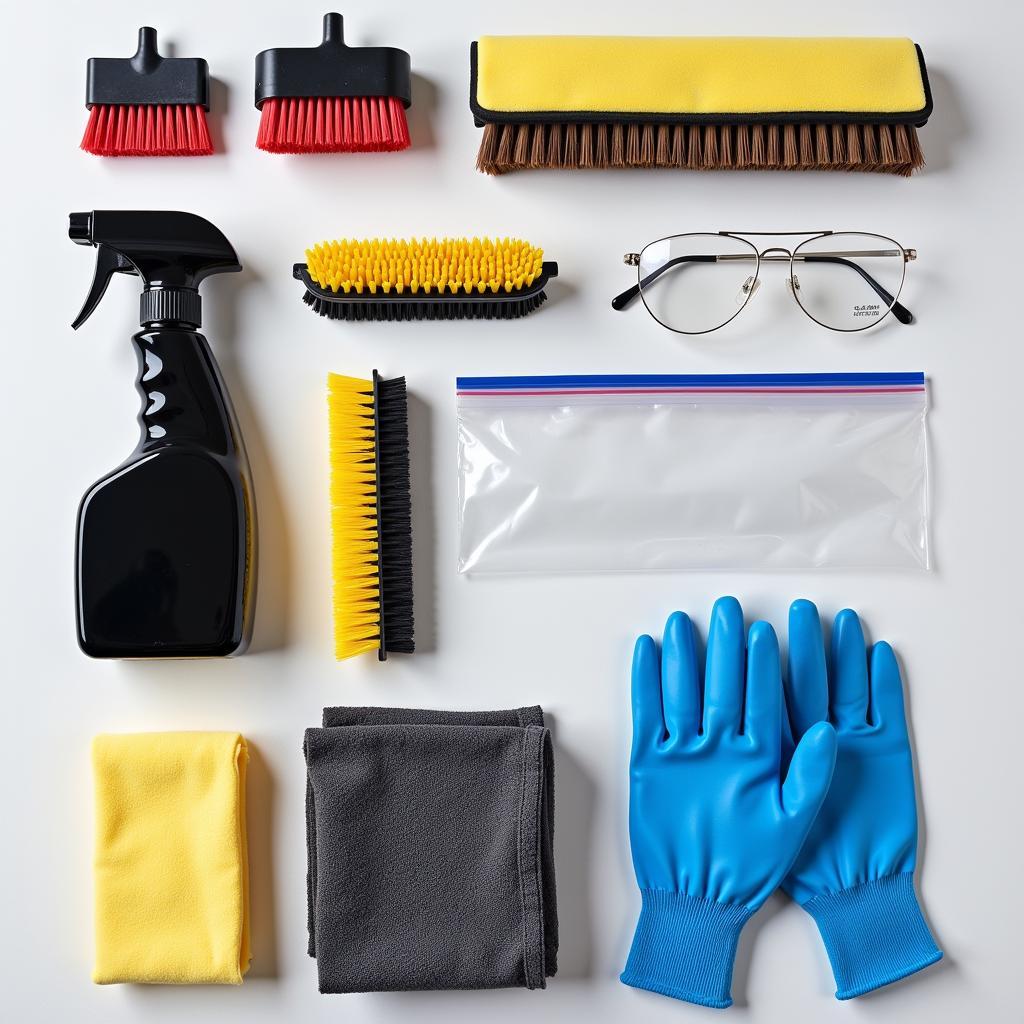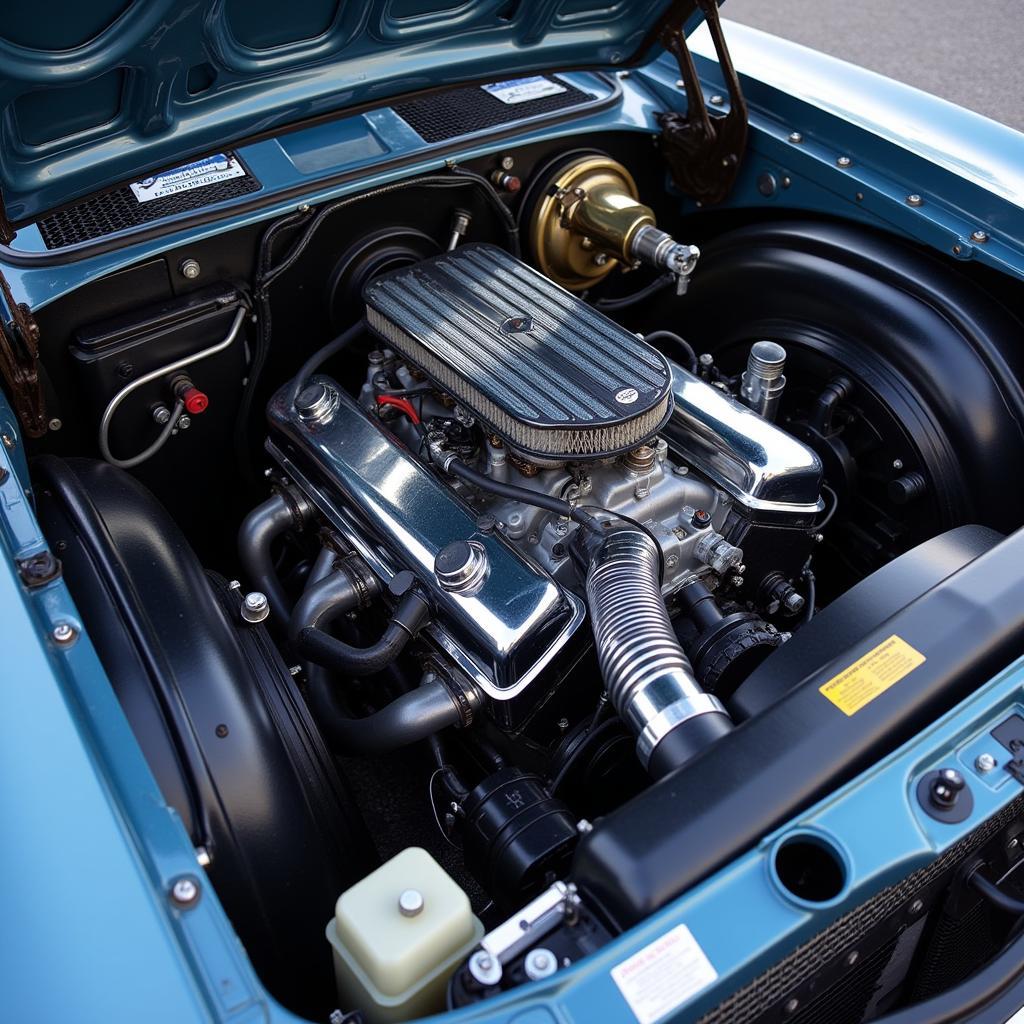A clean engine bay not only looks impressive but also contributes to the longevity and performance of your vehicle. Learning How Do You Detail Your Car Engine properly is essential for any car enthusiast. This guide will provide a step-by-step process, expert tips, and answer frequently asked questions to help you achieve professional-level results.
Preparing for the Engine Detail
Before you begin detailing your car engine, gather the necessary supplies. You’ll need degreaser, engine cleaner, a variety of brushes (including a detailing brush and toothbrush), microfiber towels, a garden hose with a spray nozzle, and protective gear like gloves and safety glasses. Ensure your engine is cool to the touch to prevent burns and damage to components.
If you’re unsure about tackling this yourself, remember you can always find out how much should i charge for a full car detail to get a professional opinion and potentially have the job done for you.
Step-by-Step Engine Detailing Process
- Cover Sensitive Components: Protect electrical connections, sensors, and the alternator with plastic bags or wrap. This crucial step prevents water damage.
- Initial Rinse: Use the garden hose with a spray nozzle to rinse off loose dirt and debris. Avoid using high-pressure water, as this can force water into sensitive areas.
- Apply Degreaser: Spray the degreaser liberally on the engine bay, focusing on particularly greasy areas. Allow it to dwell for the recommended time according to the product instructions.
- Scrub and Agitate: Using your brushes, thoroughly scrub all surfaces of the engine. A detailing brush is great for larger areas, while a toothbrush can reach tight spots.
- Rinse Again: Rinse the engine bay thoroughly, ensuring all traces of degreaser are removed.
- Apply Engine Cleaner: Spray the engine cleaner evenly over the engine bay. This will help brighten and protect the surfaces.
- Final Rinse: Give the engine a final rinse with clean water.
- Drying: Use microfiber towels to dry the engine bay as much as possible. You can also use compressed air to blow out any remaining water in hard-to-reach areas.
- Dress and Protect: Apply an engine dressing or protectant to give the engine bay a polished look and protect against future grime.
 Essential Supplies for Engine Detailing
Essential Supplies for Engine Detailing
Tips for a Professional Finish
- Work in Sections: Divide the engine bay into smaller sections to make the cleaning process more manageable. This also ensures you don’t miss any spots.
- Use the Right Brushes: Different brushes are designed for different purposes. A soft detailing brush is ideal for delicate surfaces, while a stiffer brush can be used on tougher grime.
- Don’t Overdo the Degreaser: Using too much degreaser can damage certain engine components. Follow the product instructions carefully.
- Pay Attention to Detail: Take your time and pay attention to the small details. This is what separates a good engine detail from a great one.
Knowing what all does car detailing mean can help you understand the scope of work involved in keeping your car in pristine condition, inside and out.
Common Engine Detailing Mistakes to Avoid
- Using High-Pressure Water: This can damage electrical components and force water into sensitive areas.
- Using Harsh Chemicals: Avoid using harsh chemicals that can damage plastic and rubber components.
- Not Protecting Sensitive Components: Always cover electrical connections and sensors before starting the cleaning process.
- Not Drying Thoroughly: Leaving water in the engine bay can lead to corrosion.
“A clean engine bay is a happy engine bay,” says renowned automotive expert, David Miller. “Regular detailing not only enhances the appearance of your vehicle but also helps prevent corrosion and maintain its value.”
Conclusion
Detailing your car engine is a rewarding task that can significantly improve the appearance and longevity of your vehicle. By following these steps and tips, you can achieve professional-level results at home. Remember, a clean engine is a happy engine! Now that you know how do you detail your car engine, give it a try and see the difference.
You may be interested in finding out what are my car details to better understand your vehicle’s specifications and maintenance requirements.
FAQs
- How often should I detail my car engine? Ideally, every 6-12 months or as needed.
- Can I use dish soap to clean my engine? It’s not recommended, as dish soap can strip away protective coatings.
- What is the best engine degreaser to use? There are many good degreasers available; choose one specifically designed for automotive use.
- How long does it take to detail a car engine? Depending on the size and condition of the engine, it can take anywhere from 1-3 hours.
- Is it safe to spray water on my engine? Yes, as long as you avoid high-pressure water and protect sensitive components.
- What is engine dressing? Engine dressing is a product that is applied after cleaning to protect and enhance the appearance of the engine bay.
- Can I detail my engine myself? Absolutely! With the right tools and knowledge, anyone can detail their car engine.
Will your car dealer detail your car? Possibly, but understanding the process yourself can save you money and ensure it’s done to your standards.
Have you ever wondered how much does car detailing cost reddit users discuss? It can be a valuable resource for comparing prices and services.
 A Detailed Car Engine
A Detailed Car Engine
For further assistance, please contact us via WhatsApp: +1(641)206-8880 or Email: [email protected]. Our customer service team is available 24/7.

Leave a Reply